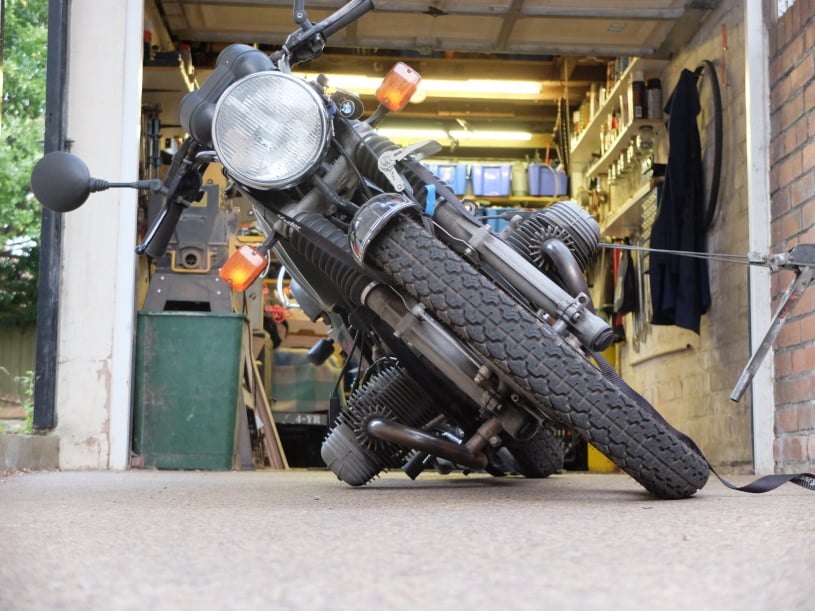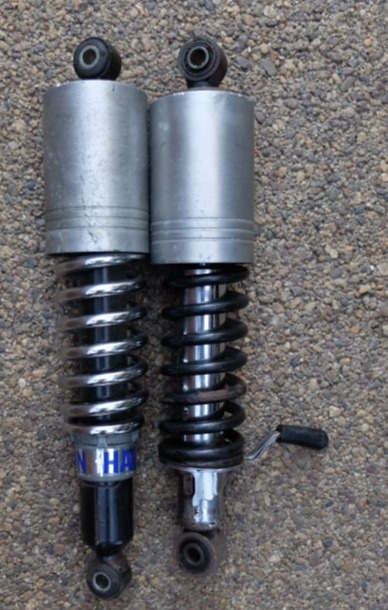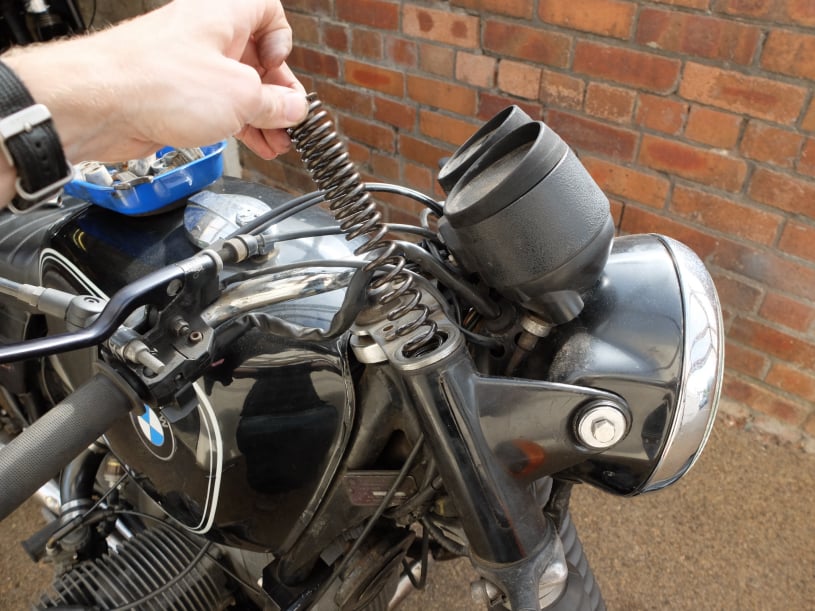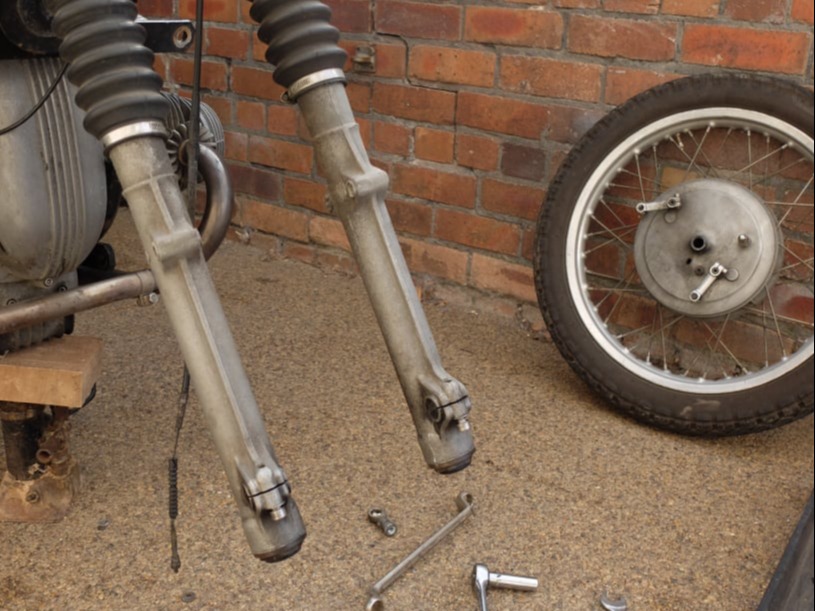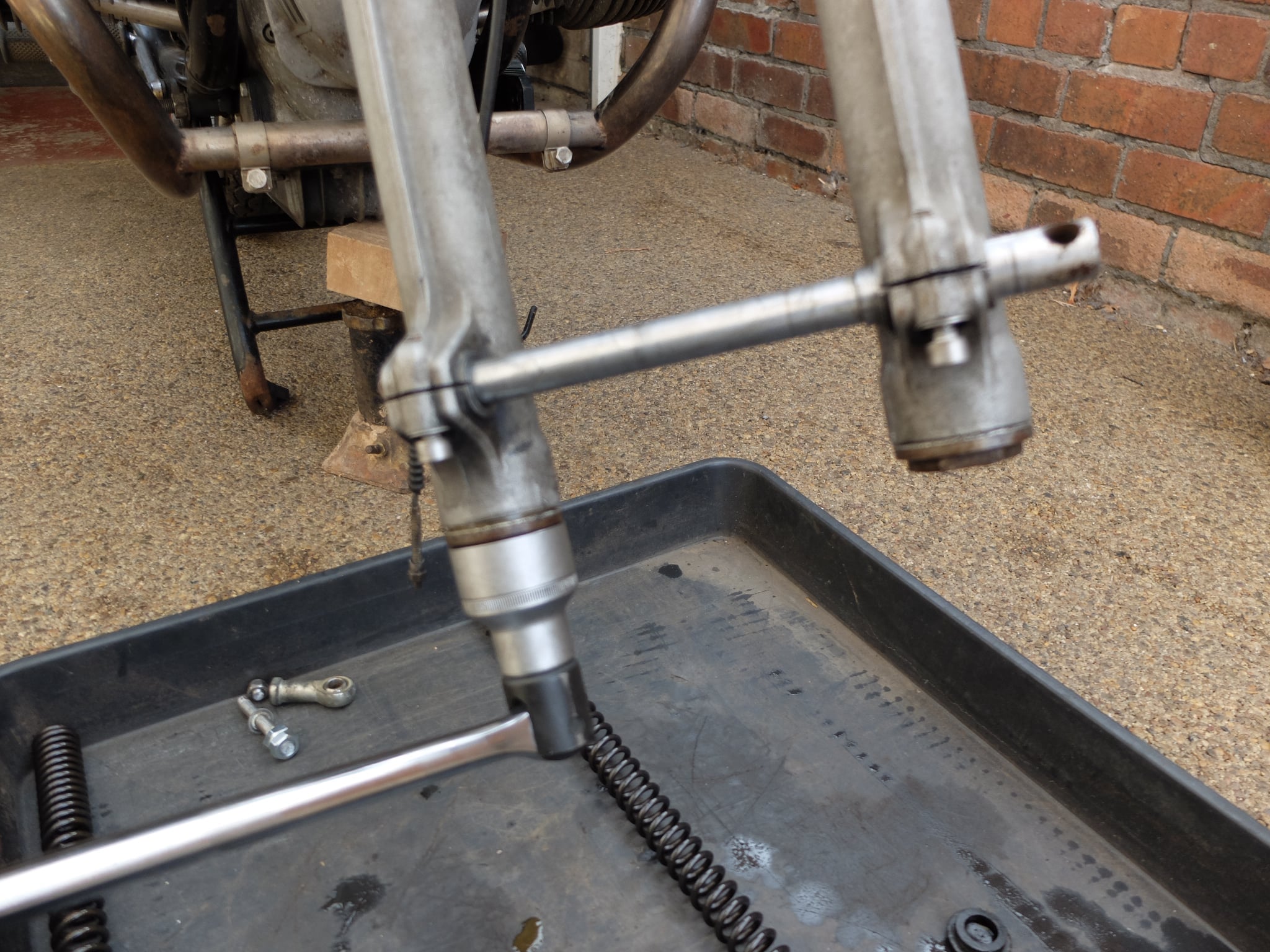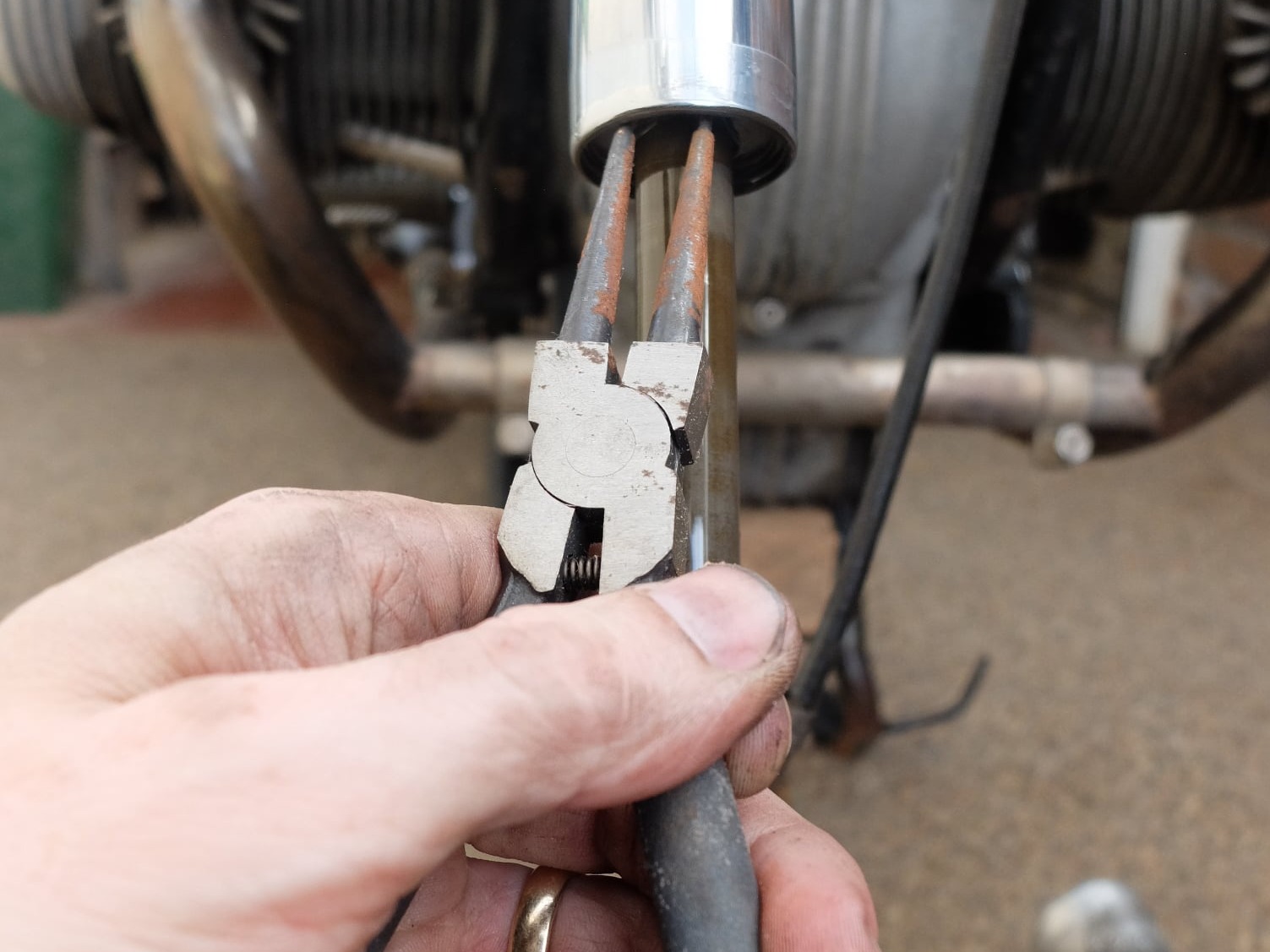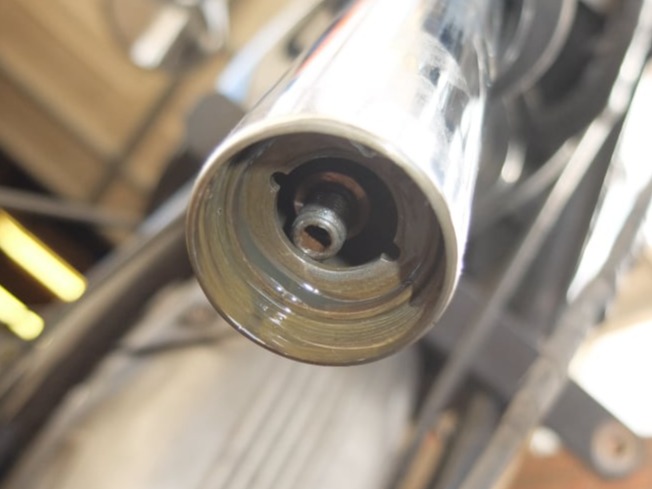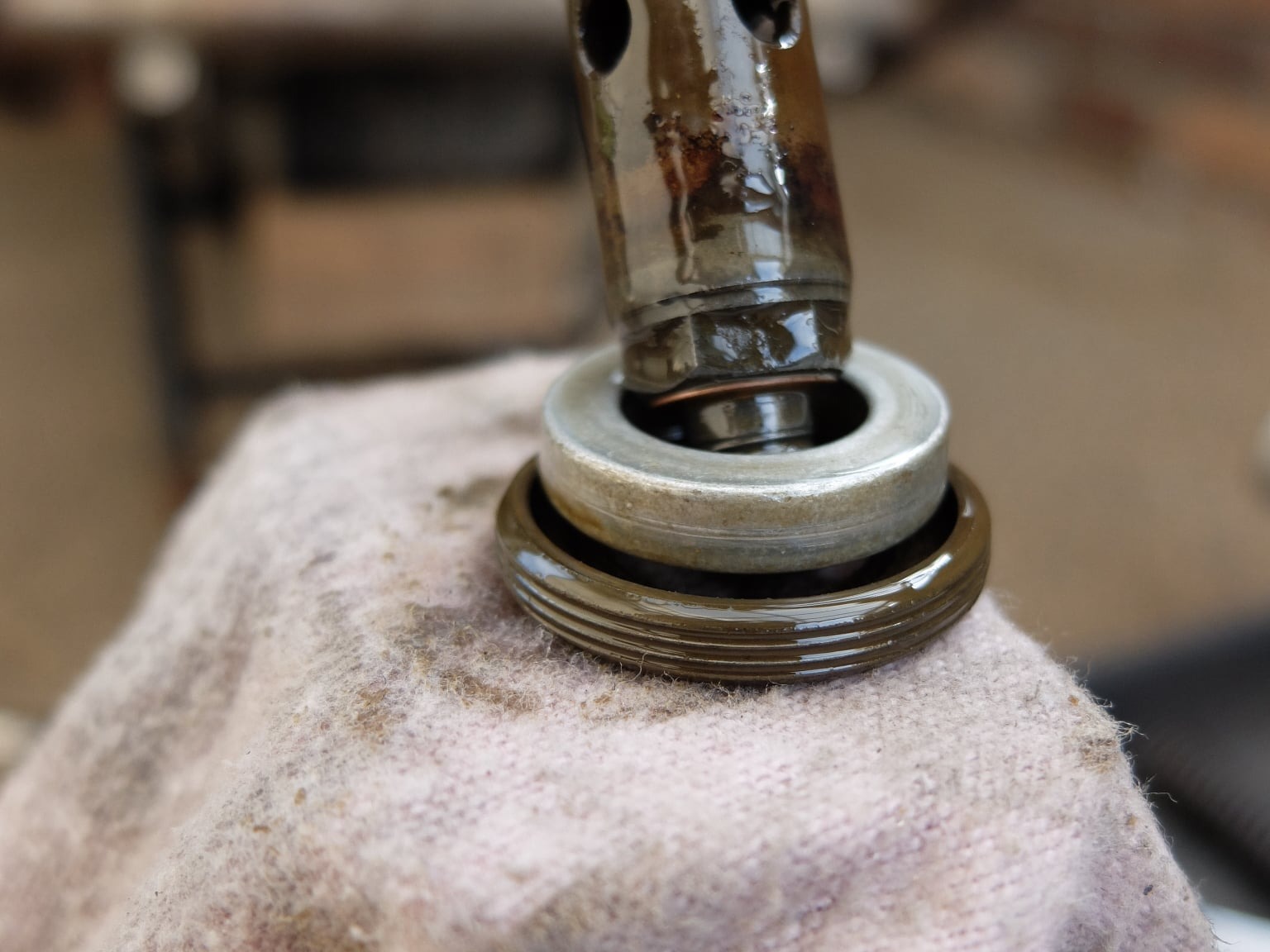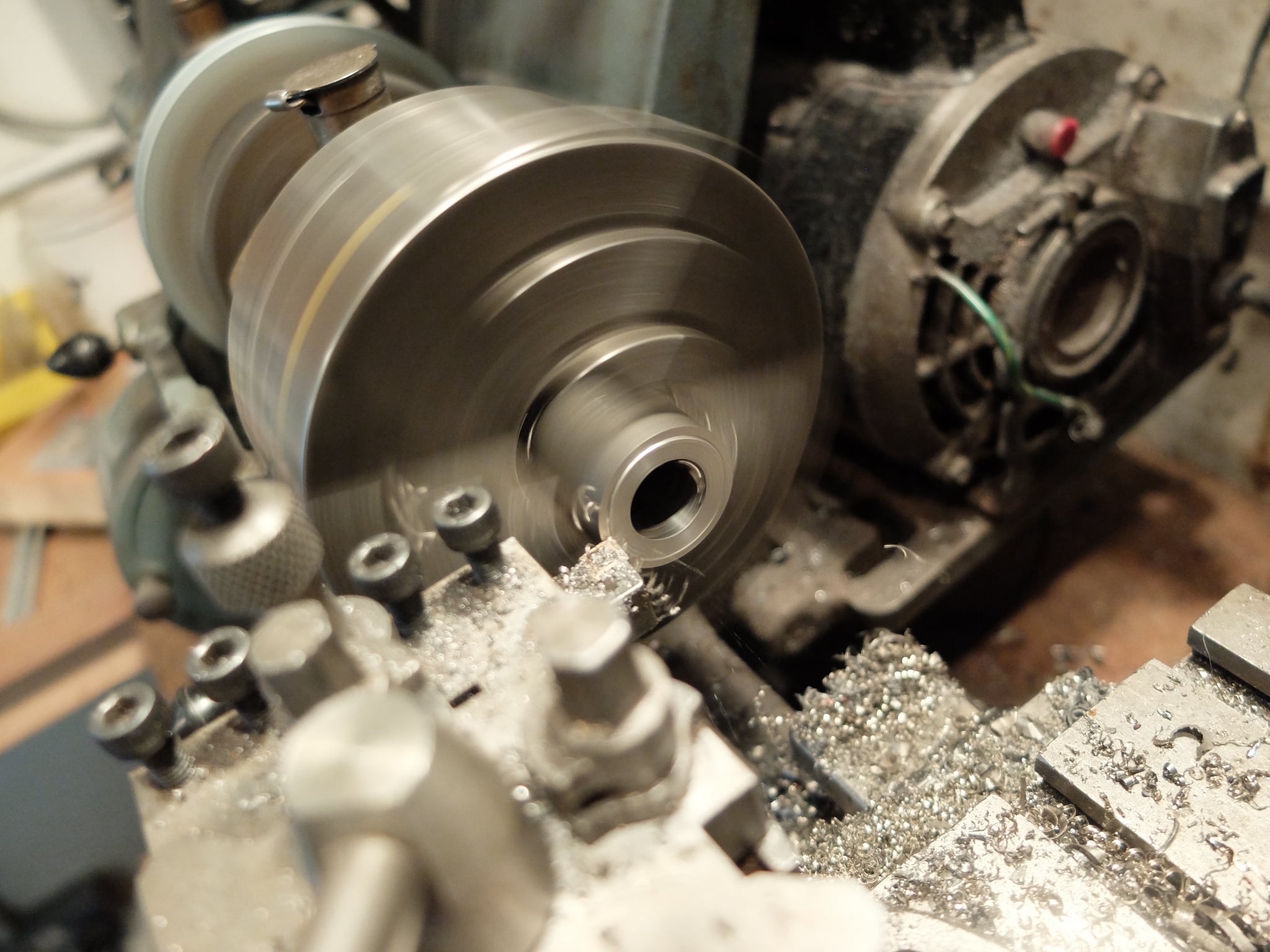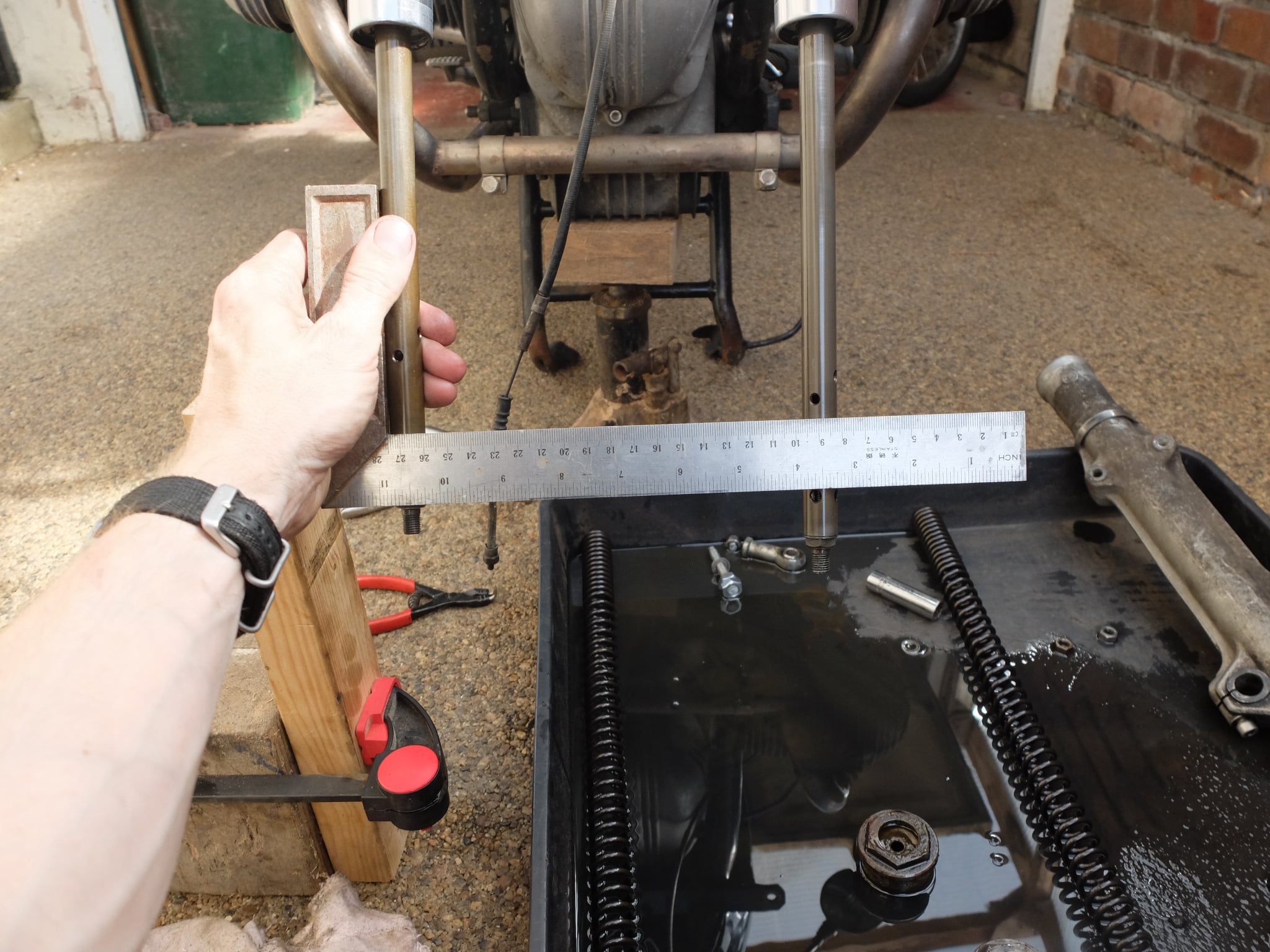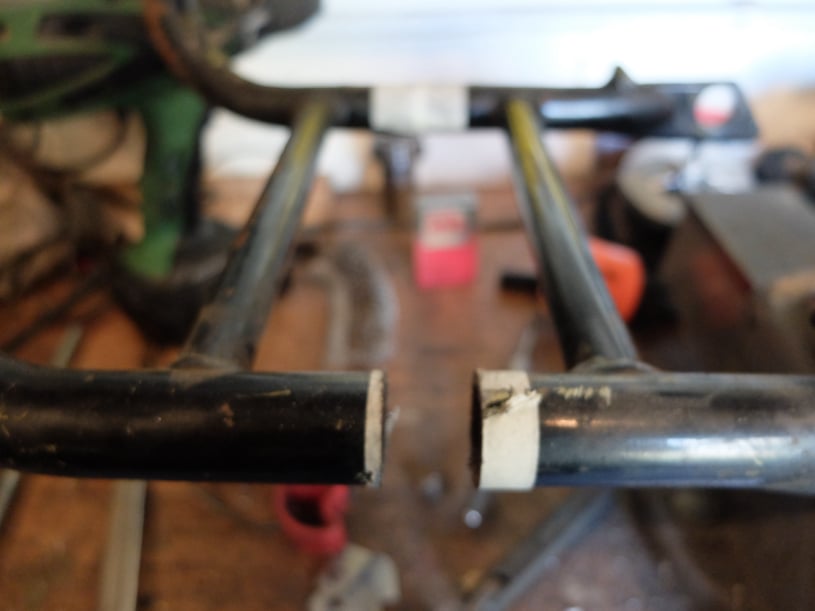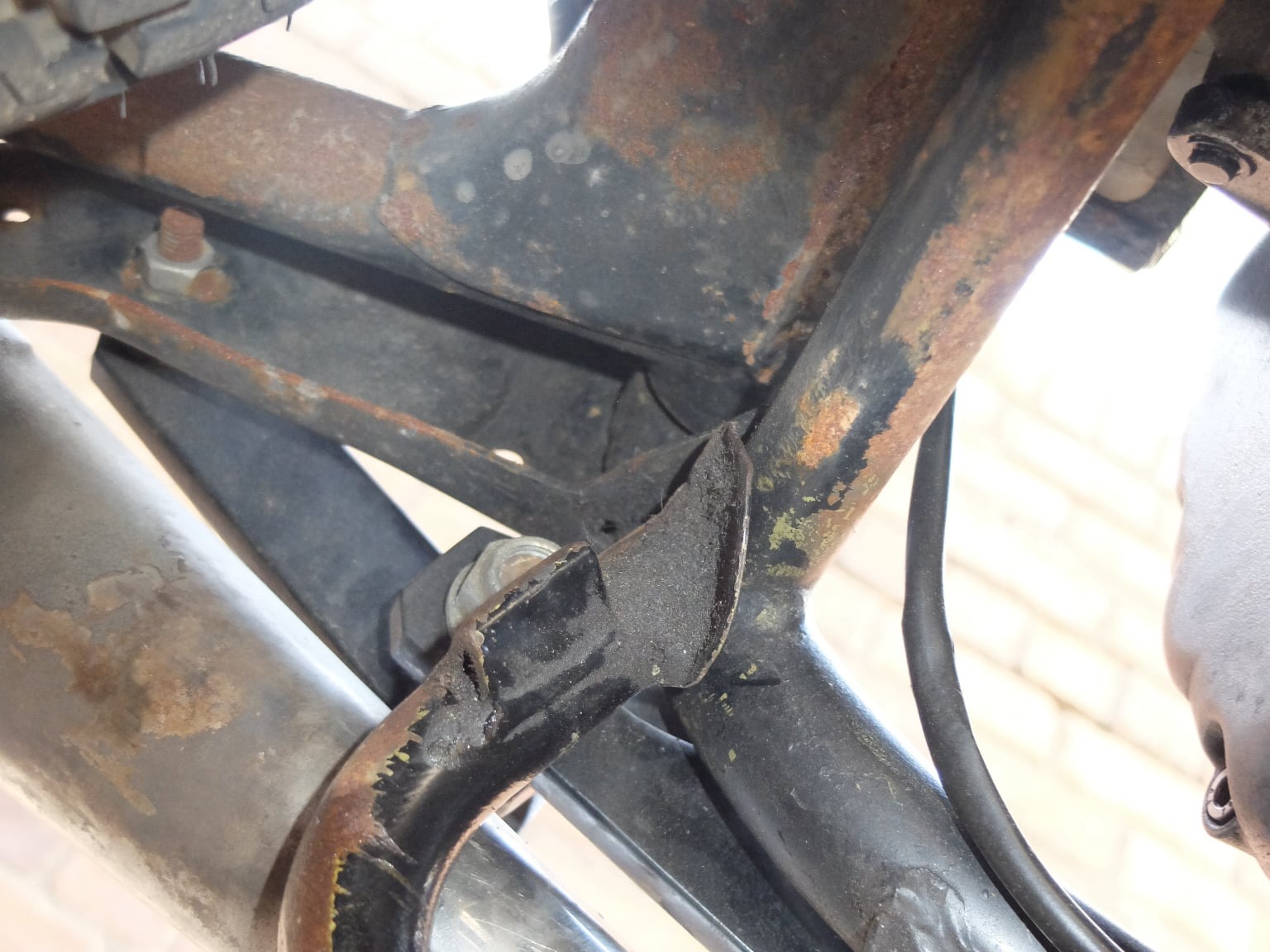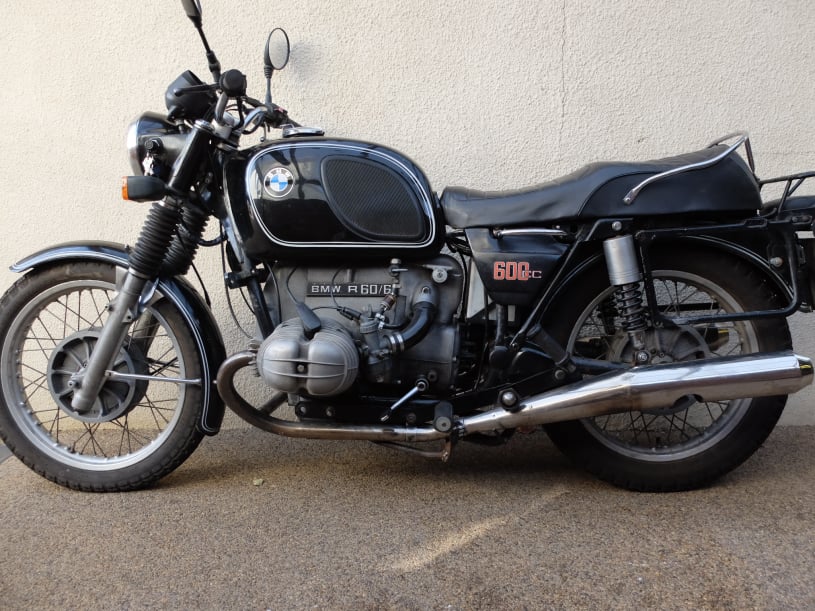
Lowering the BMW R60/6
Motorcycle suspension is critical to the safe handling of a bike and so adjustments should not be made lightly.
This page details how this BMW R60/6 was lowered to make it easier to ride for a short rider, but these changes should only be made if you are confident and must be made at your own risk.
In this case the result was satisfactory and preferable to an over-tall bike which also had safety implications.
